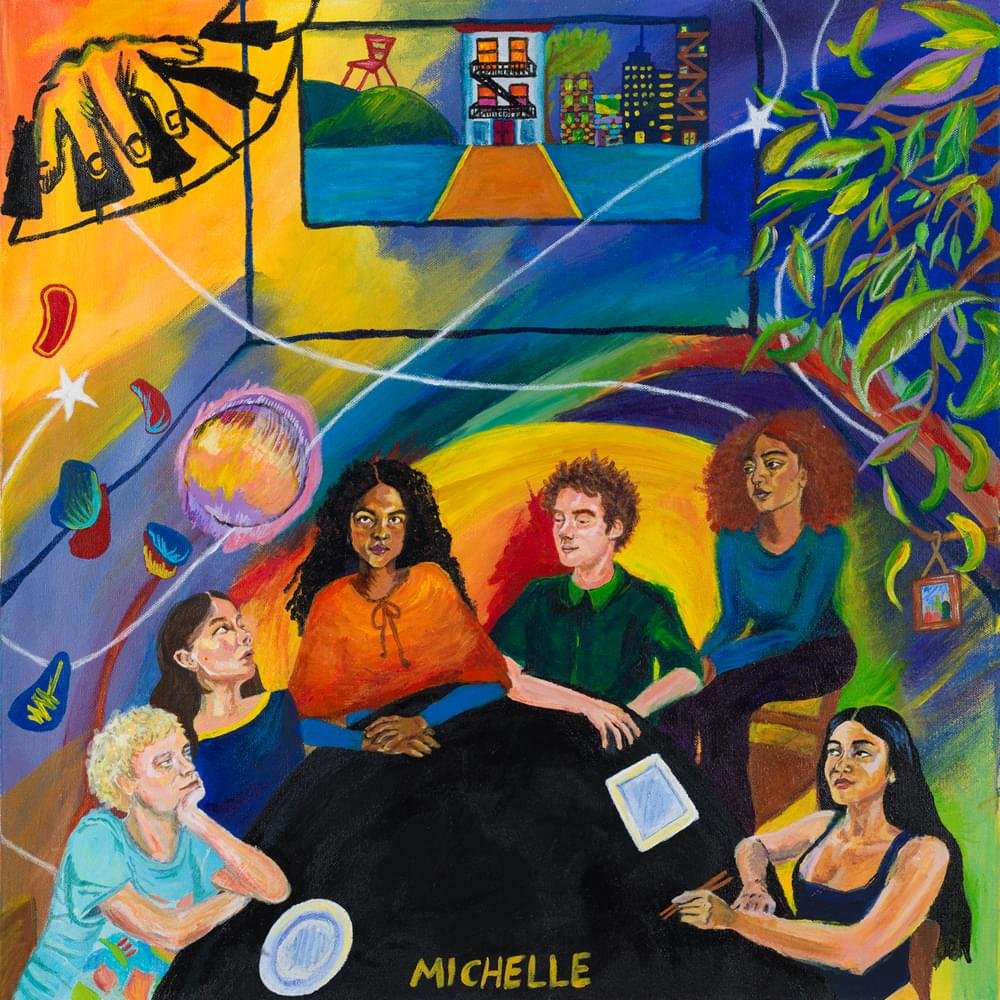The Merrier – Cyclical | EP Review
/Remember when the internet was fun? Remember multi-colored clamshell MacBooks and AIM away messages? Remember agonizing over your Top 8 and risking a computer virus just to download a sketchy file named “nine_inch_nails-HURT-014.mp3” for your morning bus ride? Well, The Merrier remembers, and throughout Cyclical, the hyper-collaborative bedroom pop project born of Jake Stephens aims to recapture that feeling of boundless early internet wonder… or at least as much of it as can be salvaged in the toxic, post-apocalyptic, ad-riddled landscape of 2022.
This isn’t some Vaporwave-esque adoption of internet aesthetics for their own sake, but rather a project that couldn’t have existed without the collaborative spirit of the internet. While most of the songs here possess a baseline dreamo soundscape, the concept behind this project turns it into something more compelling than the sum of its parts as Stephens invites a host of different artists in to collaborate on each song. This process results in a collection of tracks with vastly different sounds and ideas that are unconcerned with genre or any larger album-wide statement. It’s like if Gorillaz were DIY… and good.
Listening to this EP feels like those now-ironic book covers showing a super cool 90s teen riding a keyboard as a metaphor for surfing the internet. Guest vocalists materialize and float by like web pages from a bygone era, each inviting the listener into their respective narrator’s rich inner world.
Cyclical begins with “BMO,” a song inspired by the Adventure Time character boasting a lovely little synth line that sounds like it was ripped straight out of a long-lost 80s workout tape. Propelled forward by this instrumental, Talor Smith of Biitchseat lends their vocals to the track, giving the listener a relatable perspective that wouldn’t have sounded out of place on last year’s I’ll become kind. After an instrumental dropout followed by a swirl of dreamy “ooohs,” the track seamlessly transitions to a verse from the Japanese lo-fi indie-pop band BLUEVALLEY, which adds a unique flavor to the song without sounding incongruous. In the final minute, these two vocal features stack on top of each other, resulting in a striking contrast of sounds that could have only been brought together under the Merrier moniker.
From here, the release winds from the catchy and biblical “Cathedral” to planetary astral projections of love on “Venus” for an ever-shifting scope that expertly utilizes its cast of guest appearances. Sandwiched between these songs is “Gold,” which works the EP’s title into a cute turn of phrase over a bright and sunny instrumental that, ironically, would have fit in perfectly over the end credits of Adventure Time. Just as you wonder where Cyclical will go next, Merrier throws “Vaminos” at you for a vibrant rap song whose verses from Ponz The Angel and Masakiio evoke the carefree joy of 2016-era Lil Uzi Vert.
After the metaphorical (and literal) high of “Vaminos,” Cyclical wraps on the punctual and groovy “Scenery,” featuring guest vocals from Ohio-based multi-instrumentalist Superdestroyer. Despite its shorter running time and peppier pace, the final minute of this song switches over to a spaced-out rainy day instrumental as Merrier allows Superdestroyer to croon the EP’s last lines.
I hope that you know
I would do anything
To make sure that you're happy
Because you make me happy
I hope that I make you happy
I hope that I make you happy
I hope that I make you happy
Maybe it’s just due to how hypnotic this repetition is, but the line “I hope that I make you happy” feels like the closest thing this EP has to a thesis, given its diverse spread of perspectives and sounds. Cyclical is a collection of songs that inherently cannot have an overarching message, but this final refrain feels like a perfect note to send the listener off on. After all, if we don’t have happiness, music, and each other, what else is there?
Cyclical represents an often-unfulfilled promise of the internet; that we would be able to connect with strangers who share our interests and artistic visions, collaborate with them, and create something special together. With Stephens as the creative ringleader, Cyclical is a diverse and exhilarating collection of songs representing pure, creative collaboration. Even upon repeat listens, this EP will keep you wondering what could possibly be coming next and always manages to leave you amazed at the result.












